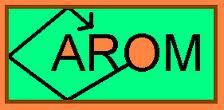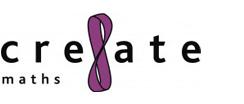Pi
A collection of resources exploring the notion of Pi and how Pi is used.
- ALL
- Video
- Presentation
- Group work
- Activity sheet
- External link
Video
KS3 Maths - Introducing Pi
In this video, Wendy Fortescue-Hubbard demonstrates a visual way of introducing Pi.
By carefully folding the label from any can across its diameter it is evident that it fits three and a bit times and Jacqui Edwards, teacher of mathematics at Vyners School in Hillingdon, uses this idea with a class of Year Eight Foundation level students, as they explore the relationship between the circumference and diameter of different sized cans.
Investigating Pi
In this video, Wendy Fortescue-Hubbard demonstrates a technique, first performed by the French naturalist George-Louis Leclerc, Comte de Buffon in 1777, used to estimate the value of Pi. Mathematics teacher Steve Imisson, at Vyners School in Hillingdon, works with a class of top set Year Nine students to investigate the polygon method for estimating Pi, before introducing them to a scaled down version of Buffon's experiment. A mathematical model is then used to highlight the surprising result of this experiment.
Presentation
Buffon's Needle
This resource is aimed at teachers and students of A Level mathematics.
This presentation introduces an explanation and a simulation of Buffon's Needles experiment, that yields an approximation for π, before developing the experiment further by asking what would happen if the shape of the needles were altered.
The activity is designed to explore aspects of the subject which may not normally be encountered, to encourage new ways to approach a problem mathematically and to broaden the range of tools that an A Level mathematician can call upon if necessary.
Group work
Running Tracks
This maths activity gives the opportunity for accurate measurement, scale drawing and calculations involving pi.
If there is access to a running track, students look at how the track is marked out and distances measured accurately for runners in each of the lanes.
Alternatively, if a track is not available, students can investigate:
• Where could a track be placed in the school grounds?
• What is the smallest area required?
• How can the track lanes be marked accurately?
Activity sheet
Circles
These 15 instant maths ideas, ideal for use as starter questions, extension question or probing questions to assess understanding, require students to perform a practical experiment in order to estimate a value for pi, describe a circle over the phone, find a connection between the length of the radius of a circle and the area of the circle, explore different series giving approximations for pi, investigate problems requiring the calculation of circumference and calculate the number of revolutions per minute of a spinning object.
The student resource sheets require students to use flow diagrams to calculate areas and perimeters of circles and estimate the area of circles drawn on squared paper.
Circle Measurement
This SMILE resource contains two packs of games, investigations, worksheets and practical activities supporting the teaching and learning of circle measurement, plus two other related resources.
Circle measurement pack one contains activities covering finding the length of a running track and the circumference of a circle, naming different parts of a circle, and calculating the area of a circle.
Circle measurement pack two contains activities requiring students to investigate packing circles into a square, find the area of a sector of a circle, find approximations to pi, and find the area of non-uniform shapes.
External link
Numberphile Pi
Some stuff about Pi, the "celebrity number'. This video features maths-loving author Alex Bellos and Professor Roger Bowley from the University of Nottingham.
Numberphile - Calculating Pi with Real Pies
Matt Parker asks "How accurately can we calculate Pi using hundreds of REAL pies?"






